Art & Exhibitions
A New Exhibition Examines the Enduring Theme of Motherhood in Art
Curated by the critic Hettie Judah, the show considers the ultimate act of creation.
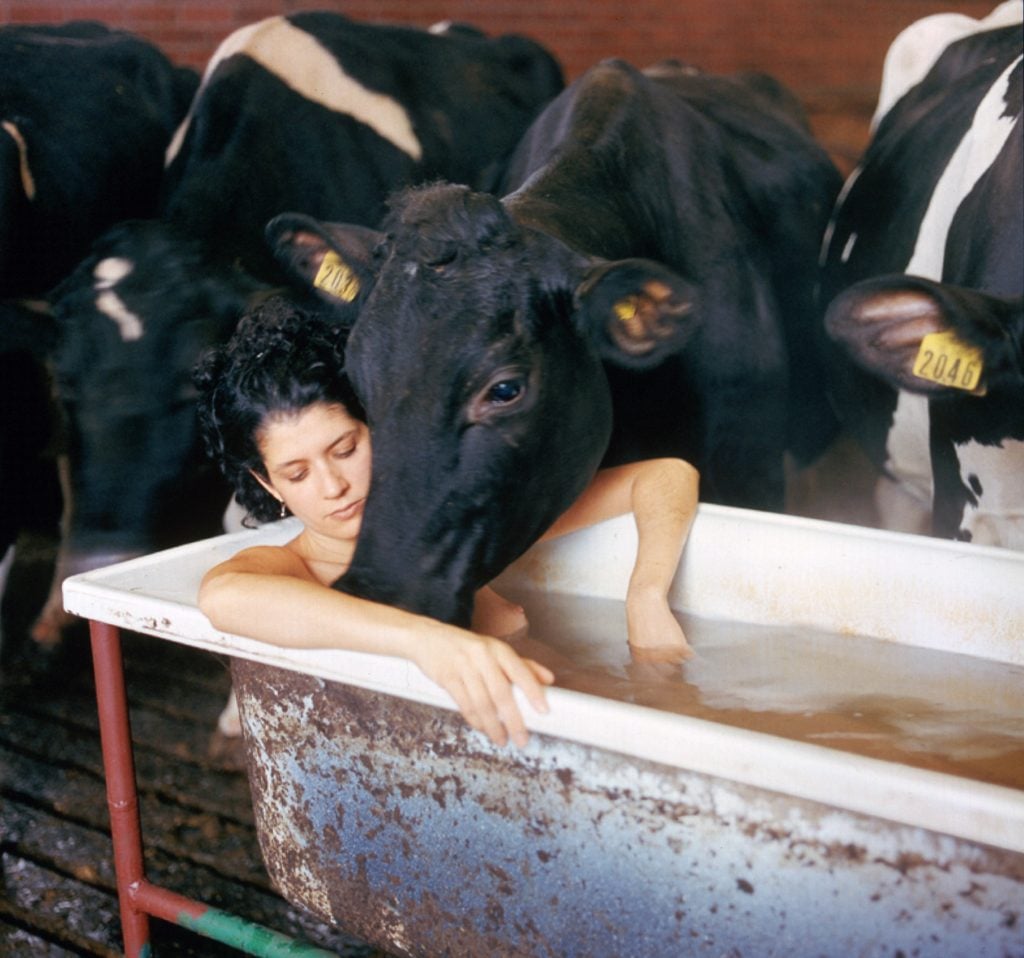
Curated by the critic Hettie Judah, the show considers the ultimate act of creation.

Jo Lawson-Tancred

You could say that depicting motherhood has been something of an obsession for Old Masters from medieval times well into the Baroque period—after all, the Virgin and Child must be art history’s most iconic motif, where Mary often appears suitably docile and doting of the miniature adult in her arms. It may be evidence enough that none of these images were actually made by a mother, and it would be centuries before most had the chance to professionally paint, let alone offer a more candid portrayal of motherhood based on real experiences.
The question of how to represent what is, arguably, humanity’s most impressive act of creation, yet one that is consistently maligned, is the subject of “Acts of Creation: On Art and Motherhood” at the Arnolfini in Bristol. The show, curated by critic Hettie Judah, author of the manifesto “How Not to Exclude Artist Parents,” also delves into the history of artist mothers and their struggle to make their voices heard within a male dominated field.
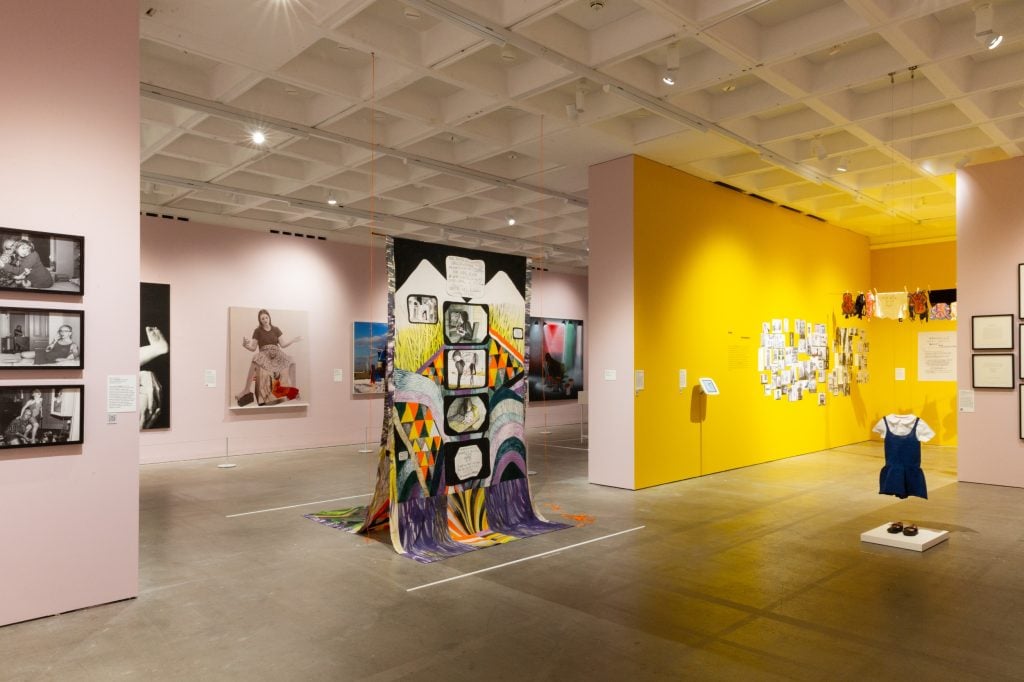
Installation view of “Acts of Creation: On Art and Motherhood” at Arnolfini, Bristol. Photo: Lisa Whiting, courtesy of Arnolfini and Hayward Gallery Touring.
As Judah points out, for centuries it was up to male artists to present their most idealized visions of motherhood. “It’s not often that you see art featuring mothers who are bone-tired from night feeds, picking a chaos world of toys off the floor, or negotiating with opinionated toddlers,” she commented. “Our great museums seldom show mothers desperately juggling work and childcare, struggling with postnatal depression, or worrying about their kid getting picked up for a police ‘stop and search’. Real motherhood, in other words, in all of its diversity.”
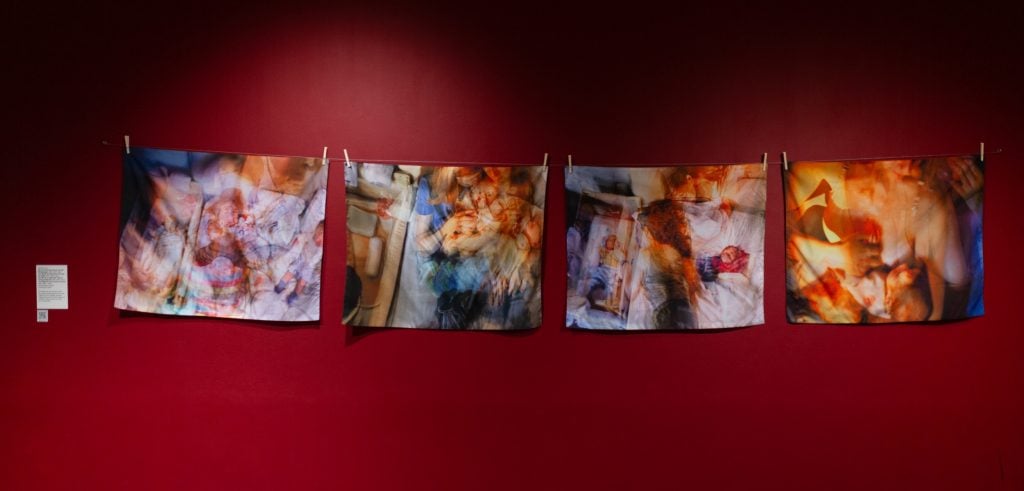
Tabitha Soren, My Great American Novel (2007) installed at “Acts of Creation: On Art and Motherhood” at Arnolfini, Bristol. Photo: Lisa Whiting, courtesy of Arnolfini and Hayward Gallery Touring.
“In the 20th century, women were led to believe that they couldn’t be both an artist and a mother—motherhood was seen as a culturally unserious state, evidence that the woman in question was not fully committed to being an artist,” said Judah. “Until very recently, it was common for art students to be told that lived experience of motherhood was not an appropriate subject for art.”
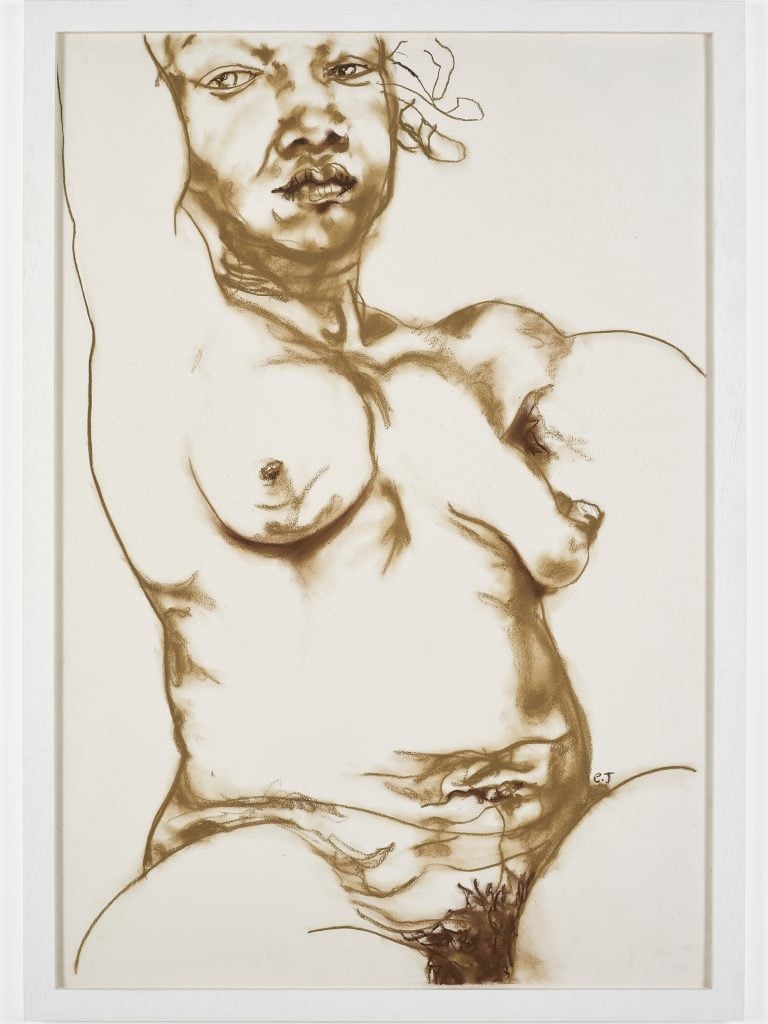
Claudette Johnson, Afterbirth (1990). Photo: © Claudette Johnson.
One of the most fraught topics for expectant mothers living under the rigid strictures of patriarchy is the question of how their body will change after bearing new life. Stretch marks, scars, and folds are worn with pride by artist Claudette Johnson in a startlingly intimate self-portrait from 1990 that shows the artist in a powerful stance that defies stigma.
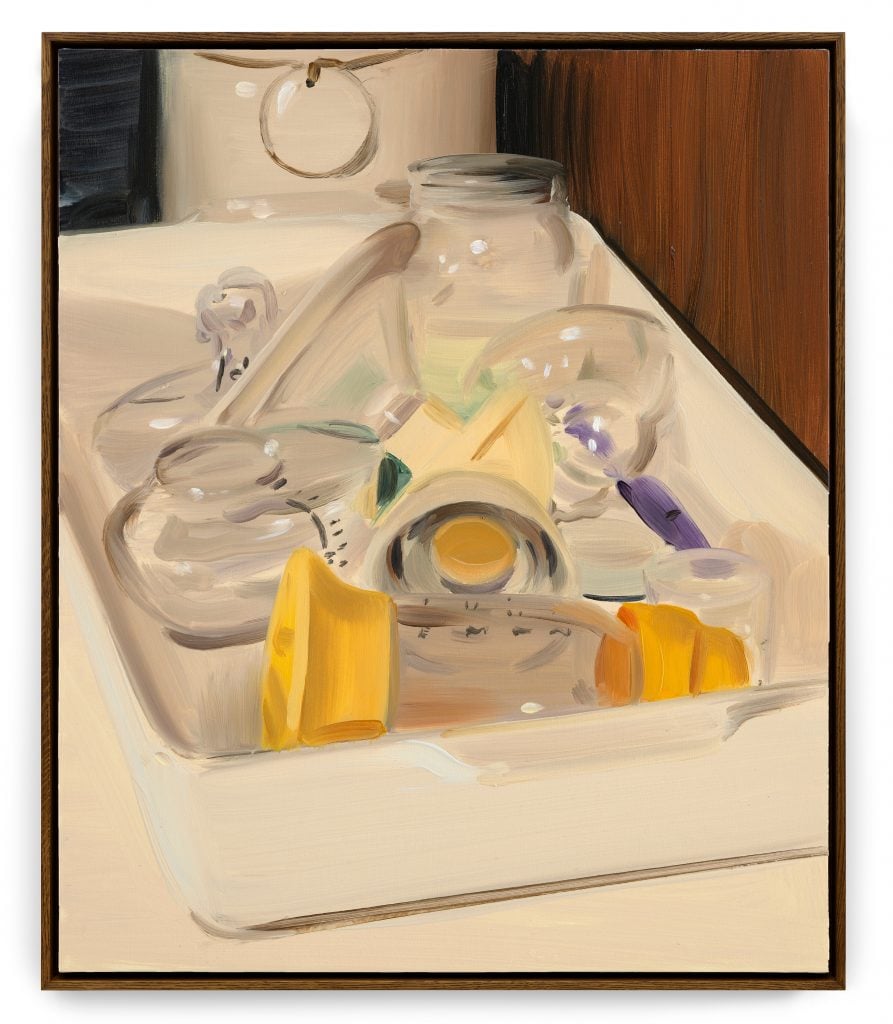
Caroline Walker, Bottles and Pumps (2022). Photo courtesy the artist.
The practical realities of caring for a baby was the subject of several 2022 paintings by Caroline Walker, who helped her sister-in-law through the first few anxious days after birth. In one work, the cleaning of equipment for bottle feeding becomes a painterly still life. The collection of plastic objects has unexpected beauty, despite their bright artificial tones of purple and yellow.
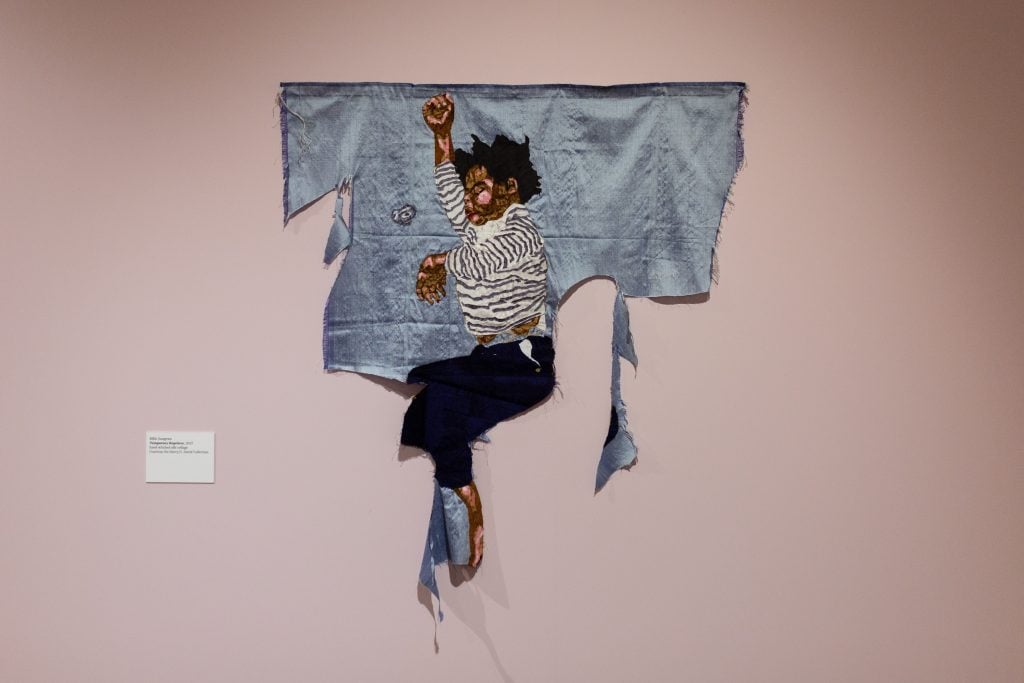
Billie Zangewa, Temporary Reprieve (2017) installed at “Acts of Creation: On Art and Motherhood” at Arnolfini, Bristol. Photo: Lisa Whiting, photo courtesy of Arnolfini and Hayward Gallery Touring.
Among the works Judah was particularly excited to include the intimate drawings of labor and delivery by Canadian-born artist Heather Spears, who stayed with a woman for several days to create the series.
“I have never encountered such a powerful account of the process of labor,” said Judah, “the long duration with its peaks and dips of activity, imagery of women getting up and walking around, napping, embracing their partner, having their cervix measured. It is an extraordinary body of work, and one that has not been seen.”
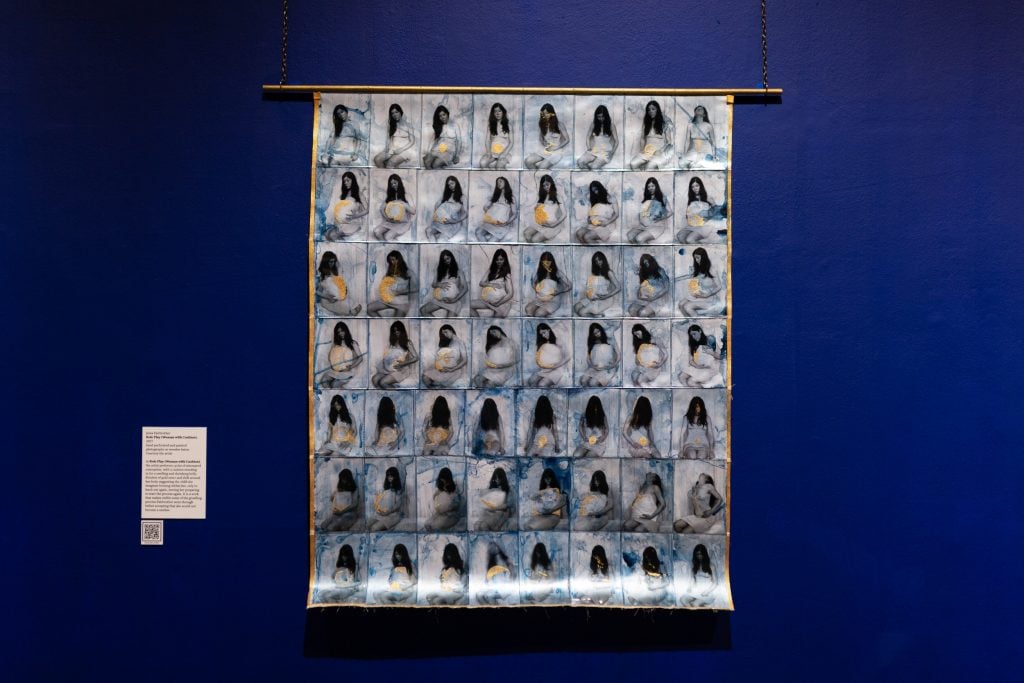
Jessa Fairbrother, Role Play (Woman with Cushion) (2017) installed at “Acts of Creation: On Art and Motherhood” at Arnolfini, Bristol. Photo: Lisa Whiting, courtesy of Arnolfini and Hayward Gallery Touring.
Judah is also particularly fond of a small 2011 self-portrait by Celia Paul called Frank and Me, in which her son lies on a sofa in the foreground and she can be seen smiling in the mirror behind.
“My sons are in their 20s, and I am so enjoying this new phase of the mother-child relationship now that they are adult men,” the curator said. “This work of Paul’s moves me so much.”
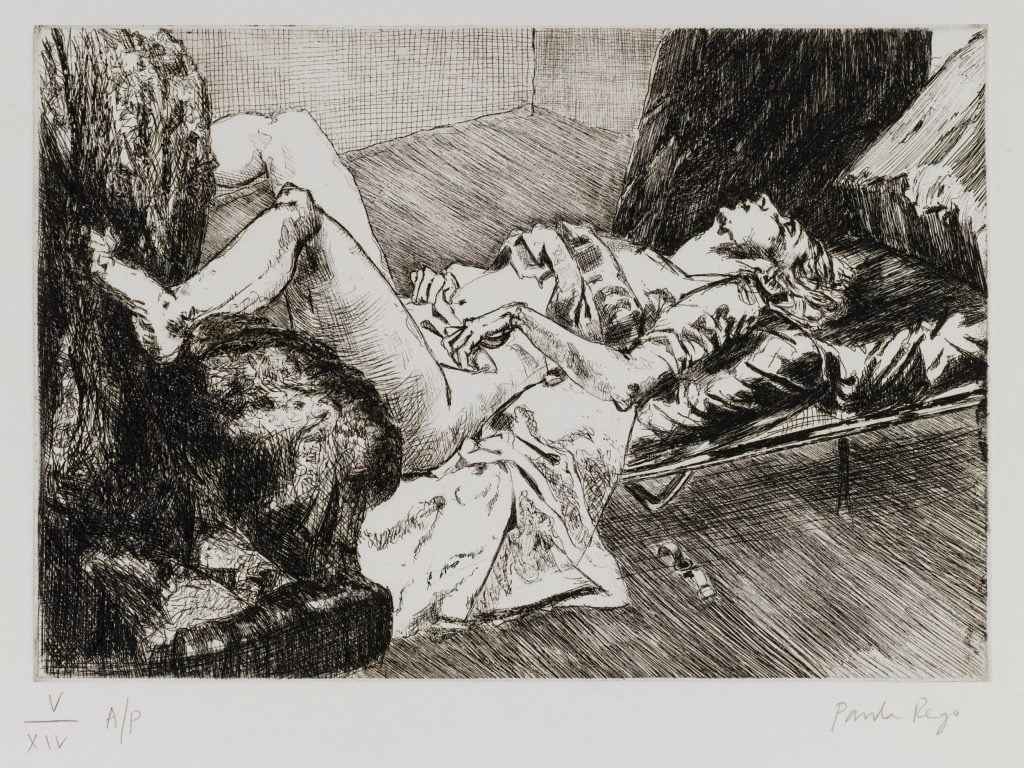
Paula Rego, Untitled 6 (1999). Photo courtesy Cristea Roberts Gallery.
The exhibition also features the work of women who have more complicated relationships to motherhood. One example is Paula Rego’s moving “Abortion” series based on her own experiences in the 1950s. It was made in the late 1990s to protest a referendum in Portugal that failed to legalize the vital medical procedure. (It was later legalized in 2007.) These works ruminate on the physical dangers and psychological toll of women being forced to visit back street clinics in secrecy.
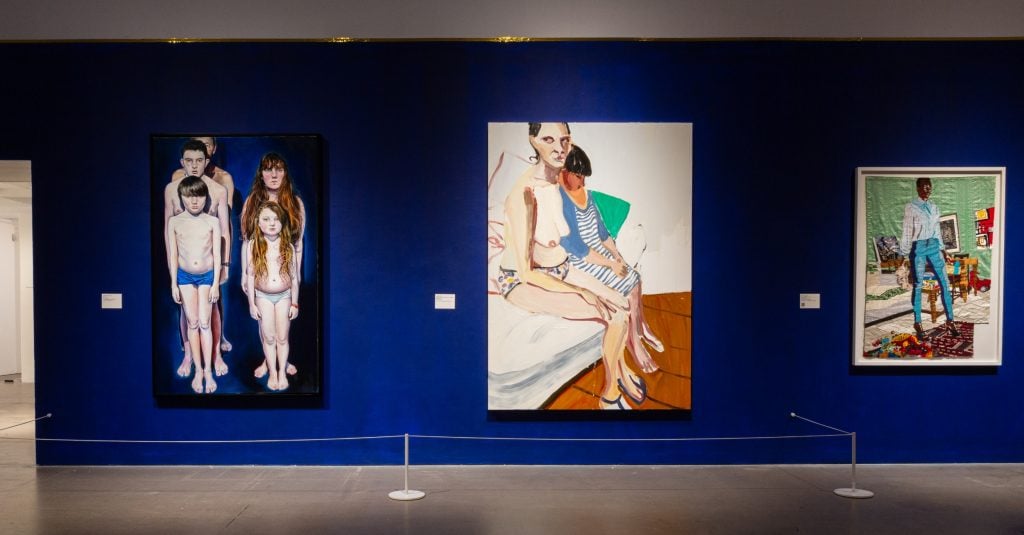
Installation view of “Acts of Creation: On Art and Motherhood” at Arnolfini, Bristol. Photo: Lisa Whiting, courtesy of Arnolfini and Hayward Gallery Touring.
“Addressing the historic gender gap isn’t just a matter of fitting women into the story of art as it has been told,” said Judah. “It is also crucial that we start asking which stories and which experiences have been excluded, and which lives have been less visible.”
“Acts of Creation: On Art and Motherhood” is on view at the Arnolfini in Bristol through May 26, 2024.